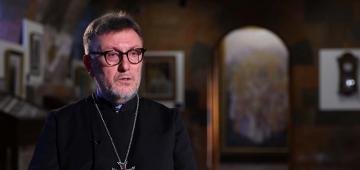 |
ToleranceWhat intellectual and spiritual knowledge and preparation is needed to demonstrate tolerance? What is the reason that modern society has become so intolerant, who is a tolerant person? These questions are examined from the perspective of Christian doctrine by Archimandrite Zatik Avetikyan. |
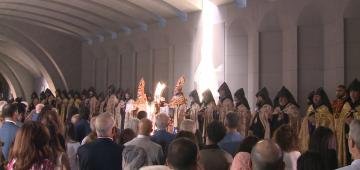 |
The Catholicosate Mausoleum and Candlelight Hall were opened under the auspices of His Holiness the PatriarchThe Catholicos' Mausoleum is located in the center of the structure, the right and left sides are intended for lighting candles. The structure also has two altars, which His Holiness consecrated and named after the apostles Thaddeus and Bartholomew. For the architects of the underground, vaulted structure, which occupies an area of about 1000 square meters, it was of fundamental importance to maintain the harmony of the modern structure with the historical structures existing in the area. The Eternal Catholicos of Armenia noted that the Mausoleum will remind future generations of the spiritual mission of all Armenian Catholicoses, which improved the national and church life of the entire Armenian people. |
 |
New Strategy for Education and Science: Part 213Hovhannes Yeranyan discussed the past, present, and future of music education in Armenia with the artistic director of the Komitas Conservatory's opera studio, People's Artist, and renowned soprano Hasmik Papyan. They also spoke about the singer's implemented and upcoming programs at the opera studio. |
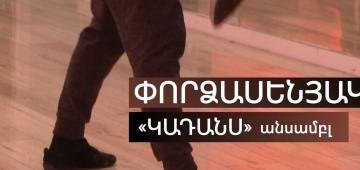 |
"Kadance" ensembleThe "Kadance" ensemble, which has a history of more than 20 years, has been reorganized, and a dance group has been added to the famous musical quintet. If in the beginning "Kadance" performed mainly the works of Astor Piazzolla, then over time the ensemble has expanded its performances to include works by European, American, Russian and Armenian classical and contemporary composers. From now on, "Kadance" will perform in a new way and in a new format. |
 |
Sisian: St. Gregory the Illuminator ChurchAfter the destruction of the Syunik principality of Shaghat and the monastery by Persian troops in the 360s, the Syunik monastery became the main sanctuary of the Syunik principality and until the 9th century was the episcopal seat of Syunik and the center of the ministerial dynasty. In the 80s of the 6th century, the Syunik princess Varazdukht built the St. Gregory the Illuminator temple on the site of the ancient temple of the monastery, which is now the visiting card of Sisian. |
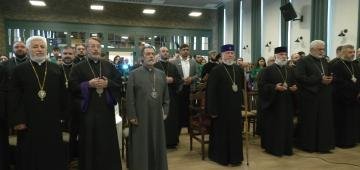 |
Catholicos of All Armenians blesses participants of the Pan-Armenian pilgrimageThe World Youth Union of the Armenian Church has celebrated its 25th anniversary. It was established at the initiative of Catholicos of All Armenians Karekin II in 2001, when the 1700th anniversary of the proclamation of Christianity as the state religion in Armenia was celebrated. More than 300 church-loving young people are participating in the pan-Armenian pilgrimage, which is being held from July 2-7. |
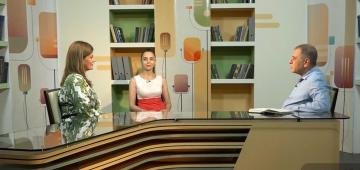 |
New Strategy for Education and Science: Part 210Hovhannes Yeranyan discussed the results of reading competitions held for age groups with Anahit Yuzbashyan and Julia Vardanyan, co-founders of the Bvik Foundation. |
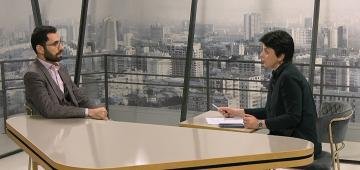 |
Who does religious law apply to, and what does canon law apply to?What is religious law and what is canon law? What restrictions are considered legitimate and by whom can they be imposed? Anna Sargsyan spoke with Vahe Torosyan, a candidate of legal sciences and a specialist in spiritual law. |
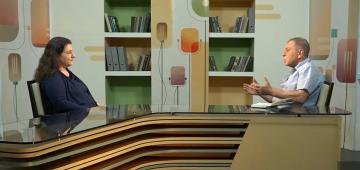 |
New Strategy for Education and Science: Part 209Hovhannes Yeranyan discussed with Zaruhi Lavchyan, the head of educational programs at the "KAZA" Foundation, the foundation's activities in Armenia and the non-formal educational programs they have implemented for beneficiaries of different age groups. |
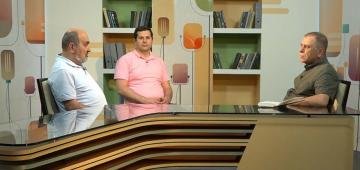 |
New Strategy for Education and Science: Part 208Hovhannes Yeranyan discussed the challenges of teaching history in general education and higher education with Mkhitar Gabrielyan, Dean of the Faculty of History of Yerevan State University, and Hayk Mkhoyan, Deputy Dean. |
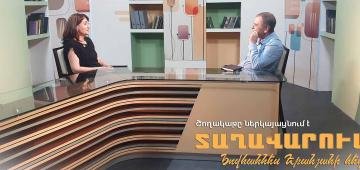 |
New Strategy for Education and Science: Part 207With Astghik Harutyunyan, founder of the "Ari" hiking club, Hovhannes Yeranyan discussed the knowledge provided to children during hikes to the mountains, valleys, and fields, the importance of knowing their native nature, and self-knowledge. |
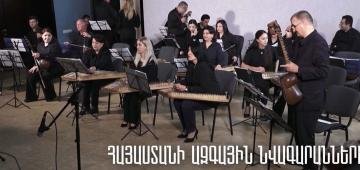 |
State Orchestra of National Instruments of ArmeniaThe State Orchestra of National Instruments of Armenia was established in 2005 on the initiative of Ara Gevorgyan and conductor Norayr Davtyan. It has undertaken a mission to preserve and develop the folk orchestral performing art formed in Armenia. From film music to adaptations of classical works, the orchestra presents national instruments in a new way. |

